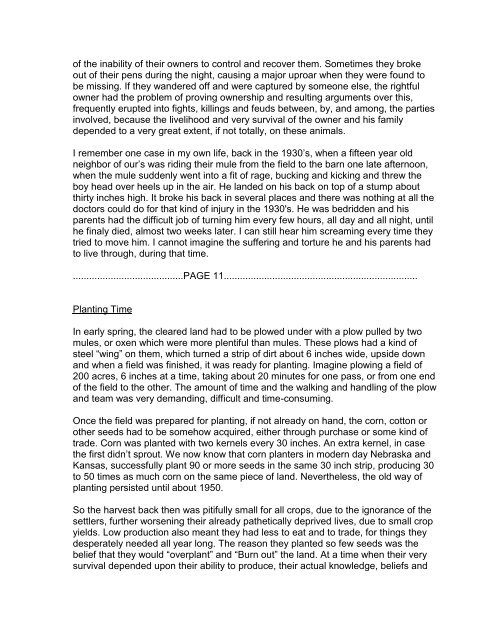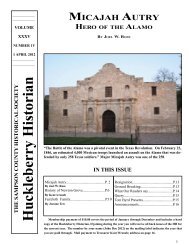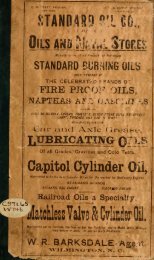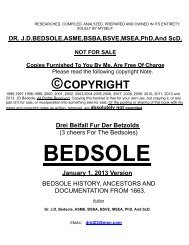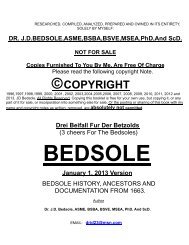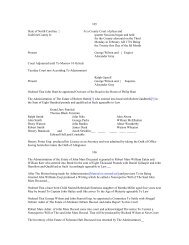11/25/07 VERSION: BEDSOLE HISTORY FROM 1673 ... - NCGenWeb
11/25/07 VERSION: BEDSOLE HISTORY FROM 1673 ... - NCGenWeb
11/25/07 VERSION: BEDSOLE HISTORY FROM 1673 ... - NCGenWeb
Create successful ePaper yourself
Turn your PDF publications into a flip-book with our unique Google optimized e-Paper software.
of the inability of their owners to control and recover them. Sometimes they broke<br />
out of their pens during the night, causing a major uproar when they were found to<br />
be missing. If they wandered off and were captured by someone else, the rightful<br />
owner had the problem of proving ownership and resulting arguments over this,<br />
frequently erupted into fights, killings and feuds between, by, and among, the parties<br />
involved, because the livelihood and very survival of the owner and his family<br />
depended to a very great extent, if not totally, on these animals.<br />
I remember one case in my own life, back in the 1930’s, when a fifteen year old<br />
neighbor of our’s was riding their mule from the field to the barn one late afternoon,<br />
when the mule suddenly went into a fit of rage, bucking and kicking and threw the<br />
boy head over heels up in the air. He landed on his back on top of a stump about<br />
thirty inches high. It broke his back in several places and there was nothing at all the<br />
doctors could do for that kind of injury in the 1930's. He was bedridden and his<br />
parents had the difficult job of turning him every few hours, all day and all night, until<br />
he finaly died, almost two weeks later. I can still hear him screaming every time they<br />
tried to move him. I cannot imagine the suffering and torture he and his parents had<br />
to live through, during that time.<br />
.........................................PAGE <strong>11</strong>........................................................................<br />
Planting Time<br />
In early spring, the cleared land had to be plowed under with a plow pulled by two<br />
mules, or oxen which were more plentiful than mules. These plows had a kind of<br />
steel “wing” on them, which turned a strip of dirt about 6 inches wide, upside down<br />
and when a field was finished, it was ready for planting. Imagine plowing a field of<br />
200 acres, 6 inches at a time, taking about 20 minutes for one pass, or from one end<br />
of the field to the other. The amount of time and the walking and handling of the plow<br />
and team was very demanding, difficult and time-consuming.<br />
Once the field was prepared for planting, if not already on hand, the corn, cotton or<br />
other seeds had to be somehow acquired, either through purchase or some kind of<br />
trade. Corn was planted with two kernels every 30 inches. An extra kernel, in case<br />
the first didn’t sprout. We now know that corn planters in modern day Nebraska and<br />
Kansas, successfully plant 90 or more seeds in the same 30 inch strip, producing 30<br />
to 50 times as much corn on the same piece of land. Nevertheless, the old way of<br />
planting persisted until about 1950.<br />
So the harvest back then was pitifully small for all crops, due to the ignorance of the<br />
settlers, further worsening their already pathetically deprived lives, due to small crop<br />
yields. Low production also meant they had less to eat and to trade, for things they<br />
desperately needed all year long. The reason they planted so few seeds was the<br />
belief that they would “overplant” and “Burn out” the land. At a time when their very<br />
survival depended upon their ability to produce, their actual knowledge, beliefs and


